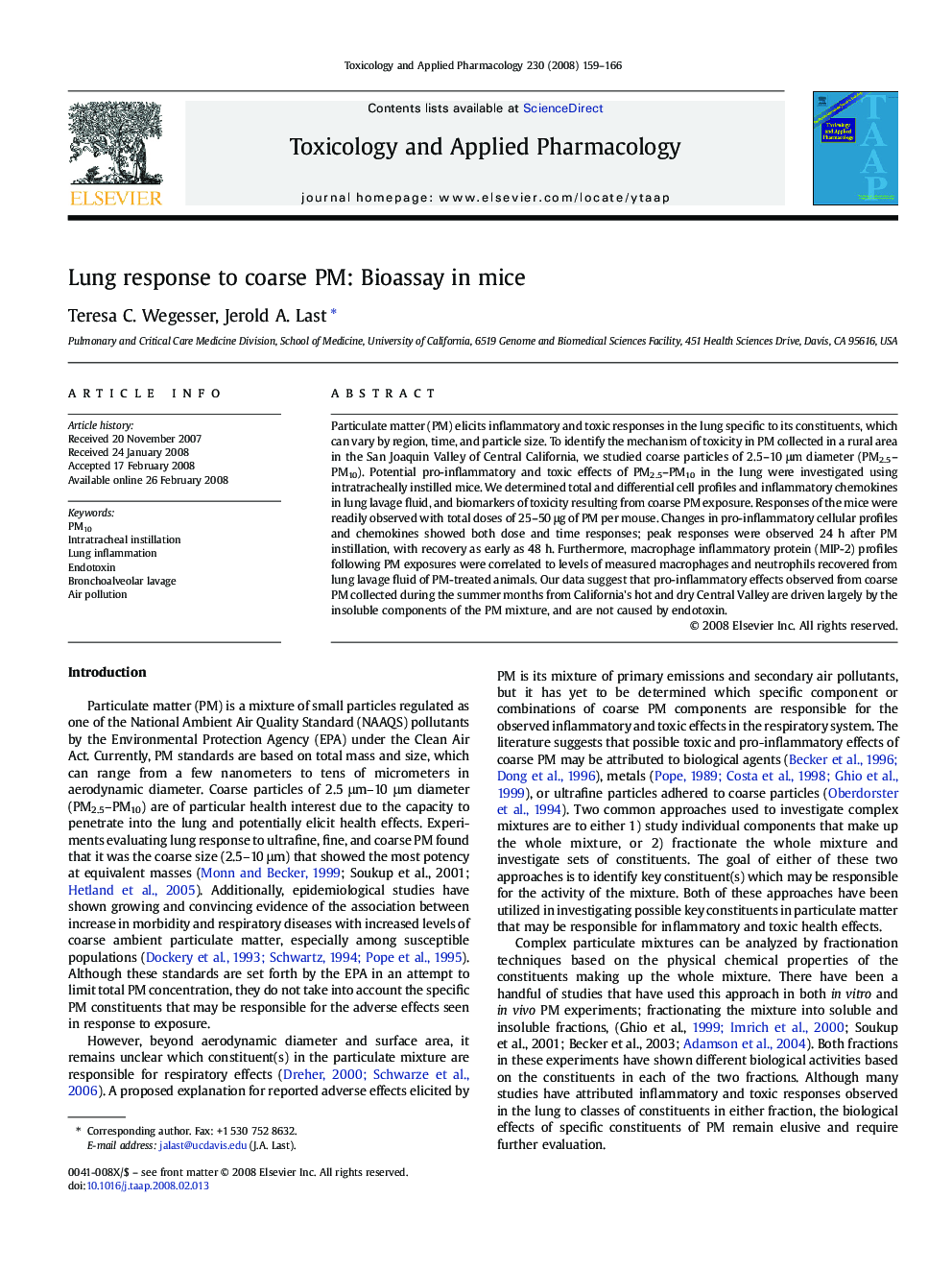| Article ID | Journal | Published Year | Pages | File Type |
|---|---|---|---|---|
| 2570354 | Toxicology and Applied Pharmacology | 2008 | 8 Pages |
Abstract
Particulate matter (PM) elicits inflammatory and toxic responses in the lung specific to its constituents, which can vary by region, time, and particle size. To identify the mechanism of toxicity in PM collected in a rural area in the San Joaquin Valley of Central California, we studied coarse particles of 2.5-10 μm diameter (PM2.5-PM10). Potential pro-inflammatory and toxic effects of PM2.5-PM10 in the lung were investigated using intratracheally instilled mice. We determined total and differential cell profiles and inflammatory chemokines in lung lavage fluid, and biomarkers of toxicity resulting from coarse PM exposure. Responses of the mice were readily observed with total doses of 25-50 μg of PM per mouse. Changes in pro-inflammatory cellular profiles and chemokines showed both dose and time responses; peak responses were observed 24 h after PM instillation, with recovery as early as 48 h. Furthermore, macrophage inflammatory protein (MIP-2) profiles following PM exposures were correlated to levels of measured macrophages and neutrophils recovered from lung lavage fluid of PM-treated animals. Our data suggest that pro-inflammatory effects observed from coarse PM collected during the summer months from California's hot and dry Central Valley are driven largely by the insoluble components of the PM mixture, and are not caused by endotoxin.
Keywords
Related Topics
Life Sciences
Environmental Science
Health, Toxicology and Mutagenesis
Authors
Teresa C. Wegesser, Jerold A. Last,
